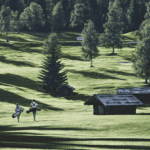The plans just unveiled for the new, 180-metre-high timber tower designed for the Sydney-based software giant Atlassian represent a milestone in environmentally friendly construction using this renewable raw material.
Sydney’s skyline is already impressive and striking. But five years from now, it will have been enriched with one more true eye-catcher: the software giant Atlassian is building a 40-storey timber tower that aims to pull out all the stops, both visually and ecologically!
A 180-metre-high timber skyscraper
Certainly, the most remarkable fact is that this building – already impressive at 180 metres high – will be constructed primarily out of wood. This much is already clear: once it is completed, the design created by the New York architects at SHoP will be the tallest timber structure in the world.
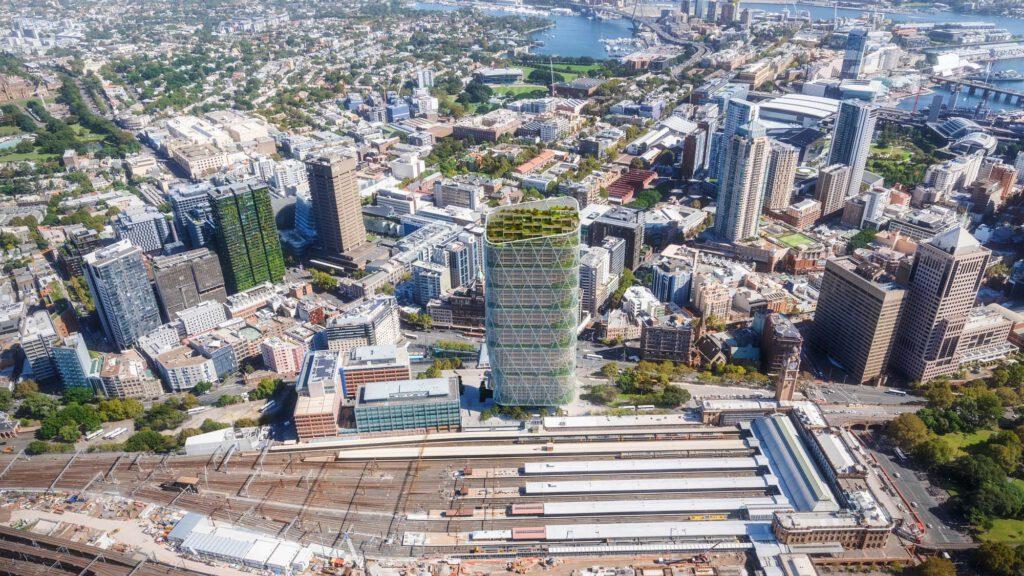
However, the London-based client is not so concerned with international superlatives. Rather, the new company headquarters in Australia aim to keep pace with the issues of our time, which involves not only preserving the environment, but also the current coronavirus crisis. The building is intended to be forward-looking for the industry as a whole.
A revolution in the building industry
Ninotschka Titchkosky, co-CEO of the architectural firm BVN that is executing the project, is convinced: “Atlassian is looking firmly towards the future. This project will set new standards – not only in Australia, but around the world.”
“Practices that are currently standard for high-rise construction will be seen as insufficient when the tower has been completed”, she continues euphorically.
Cross-laminated timber is an incredibly green material, and it helps us to avoid massive amounts of concrete and steel.
Scott Farquhar, co-founder of Atlassian
But what actions will follow these lofty words? Let’s start at the bottom: the site on which the timber tower will be built is currently home to a youth hostel and a parcels shed.
Foundations with significance
The two existing buildings will not simply be demolished, however; the plan is to revitalize them and incorporate them into the new structure. This conscious decision by the developers also has its own symbolic meaning:
We don’t throw anything away!
The actual new construction, a combination of wood and steel, will therefore be erected on the existing foundations.
The big challenge with timber buildings is fire compartmentation and structural loading. In order to overcome these problems, the building will be constructed as a hybrid.
Titchkosky remarks
Simply put, this means that steel and concrete will be used only in those places where, in terms of structure and fire safety, it is simply not possible to do otherwise. This will primarily take the form of an exoskeleton that coils around the outside of the building.
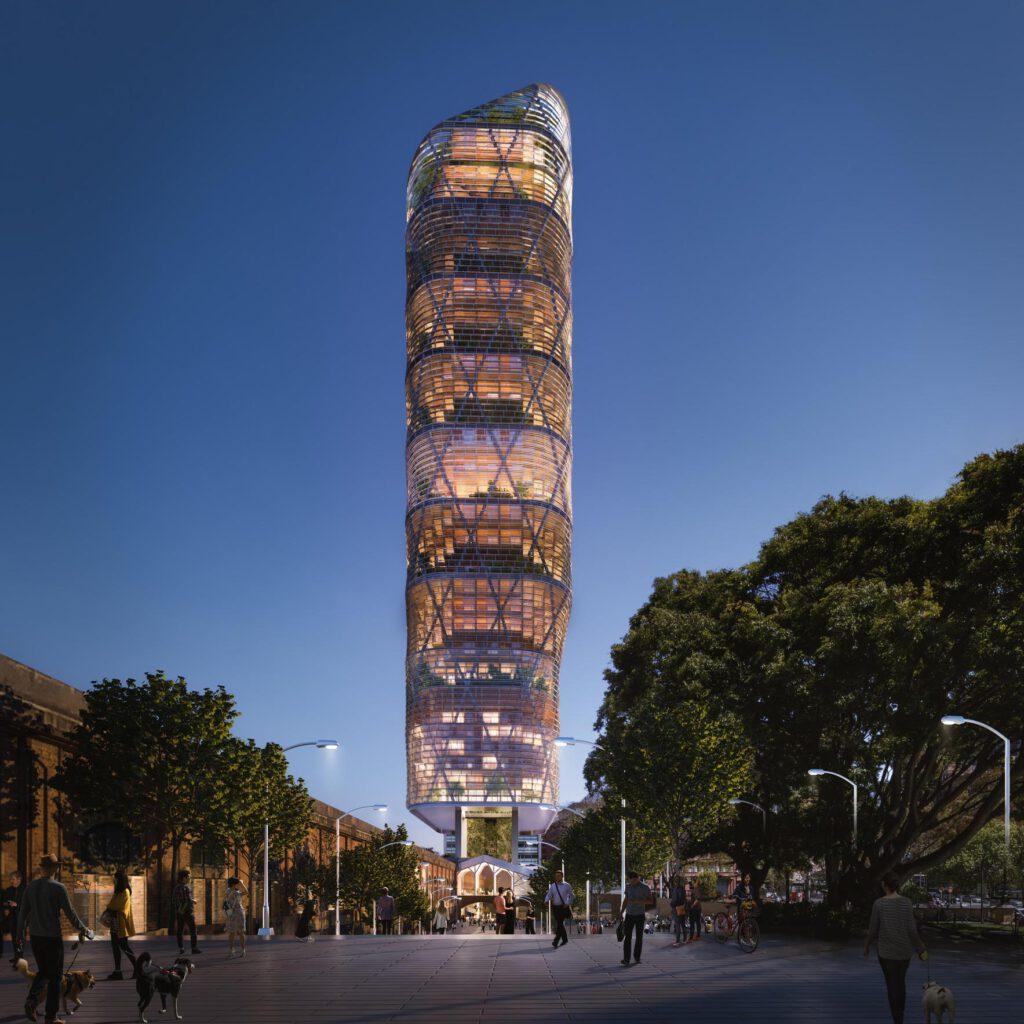
But everything possible will be constructed out of wood.
Cross-laminated timber is an incredibly green material, and it helps us to avoid massive amounts of concrete and steel,
says Scott Farquhar, co-founder of Atlassian.
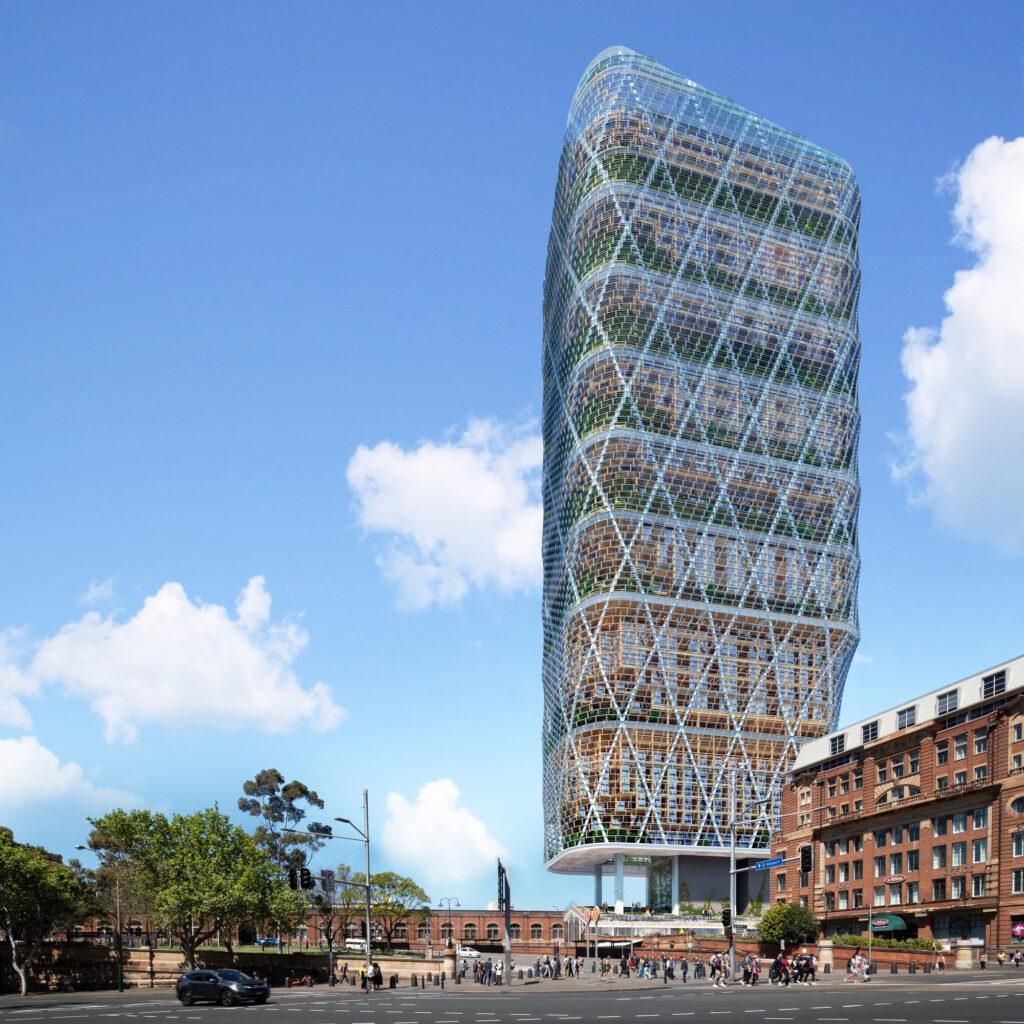
100% solar power
In addition, the giant timber tower will be clad with special glass facades that truly have special powers: they contain integrated solar panels.
Thanks to Sydney’s predominately sunny climate – an average of 300 sunny days per year and eight hours of sun per day – these panels can deliver enough energy to meet the entire needs of the gigantic complex.
Vertical allotment gardens
The energy-generating sections of the facade also allow for the integration of modern self-shading systems. These keep heat from entering the building, so that less energy is required to cool the interior spaces.
What’s more, this process is assisted by the most visible special feature of the timber skyscraper: the gardens that wind around the building behind its glass facade.
Each individual zone will have its own garden area,
says Titchkosky.
But the true green crown is the building’s rooftop. It is planned as a genuine park, complete with trees, shrubs and meadows.
Ultimately, these measures are intended to achieve an eco-balance to be proud of: compared with conventional concrete and steel structures, the finished tower will contain 50 per cent less carbon. Once the building is operational, it is predicted to use 50 per cent less energy than a solidly constructed building.
Voluntary climate goals
With this project, the company aims to come one step closer to its stated sustainability goals. The firm has committed to achieving “net zero emissions” by the year 2050. This means that the firm as a whole will not generate more carbon emissions than it saves.
Scott Farquhar clearly states his vision accordingly:
We are building this timber skyscraper not for today’s world, but rather for tomorrow’s.
For the future of work.
Here he is referring not only to the subject of sustainability, but also to the newly defined work structure that has existed since the coronavirus. Namely: home office.
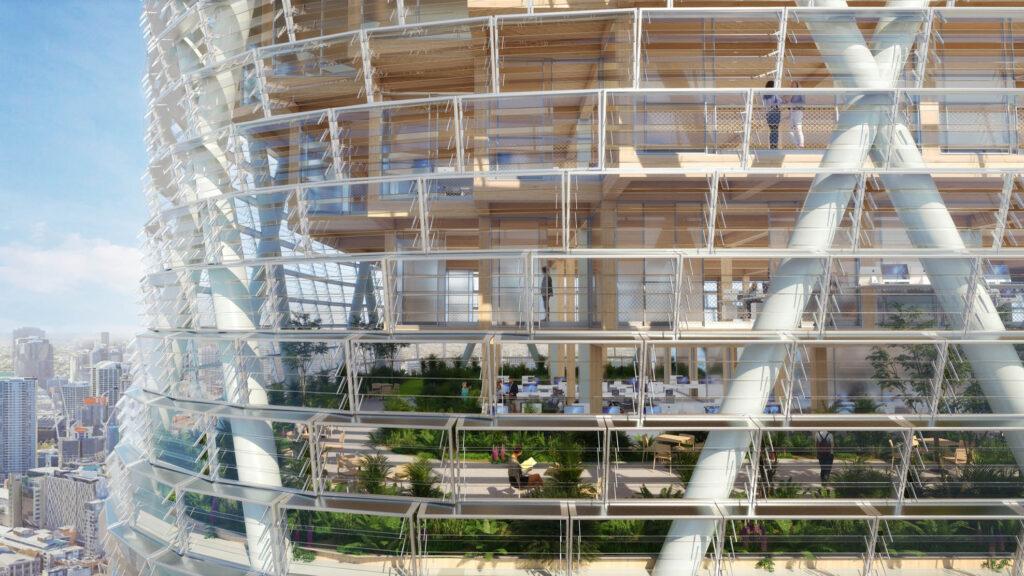
Specifically, the co-CEO states:
Even with a highly distributed workforce, we’ll need a place to come together.
He is convinced that even a modern company like Atlassian needs to offer a place “that attracts its employees to come in and do their best work. It’s a billboard to future employees.” His logical conclusion:
We have the opportunity to be maybe the first building in Sydney built for a distributed workforce in a new way.
Offices not designed in storeys
This is one of the reasons why the arrangement of the building’s 4,000 work spaces was not designed in storeys, but in “habitats and neighbourhoods”, as the architects emphasize. Each habitat therefore has its own garden seating area, so that everyone has access to open space at all times.
The space that we are building will be highly flexible.
the planners state.
It will be purpose-built for the future of work,
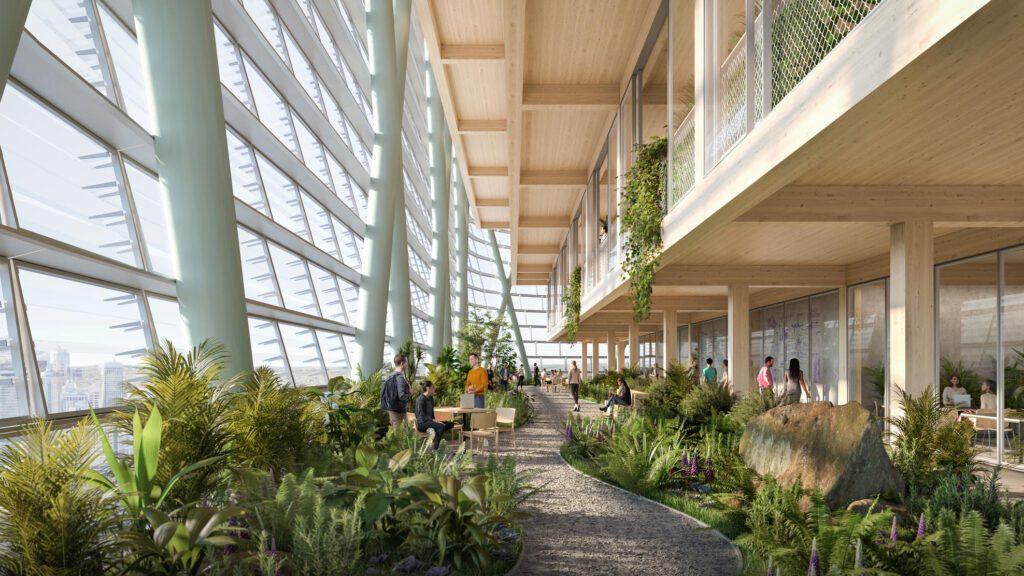
Even if we cannot yet fully imagine what these newly-created conditions will be like, we can rest assured that a workplace revolution awaits us. After all, the software giant Atlassian has already achieved this at a digital level: its project management tool, Trello – also widely used in Europe – has greatly simplified the world of work for more than 25 million users.
This naturally makes us wonder what the developers have in mind for their own workplace…

Text: Johannes Stühlinger
Translation: Rosemary Bridger-Lippe
Images: SHoP/BVN





